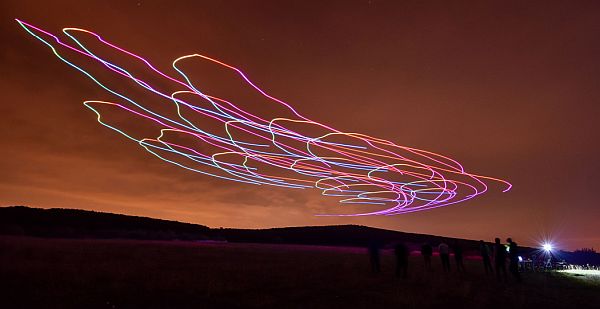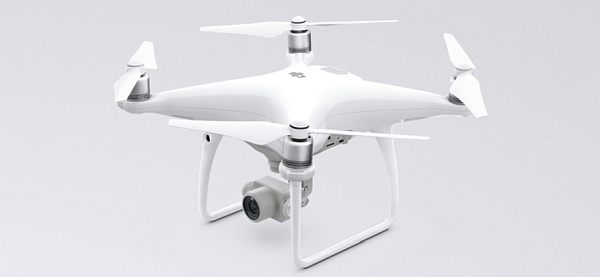Podcast: Play in new window | Download (Duration: 26:41 — 18.4MB)
A flock of drones that act autonomously, the Airbus Zephyr maiden flight, Teal Group predicts strong growth for the civil drone market, DJI improves their geofence unlocking process, another incident with an airliner, and suicide drones that take out hostile UAVs.
UAV News
How a Flock of Drones Developed Collective Intelligence
These autonomous drones flock without any pre-programming or control station. Instead, they communicate amongst themselves and self-organize, split around obstacles, rejoin, and avoid colliding with each other. The flocking model is described in Science Robotics Vol. 3, Issue 20. The research is from the Robotic Lab in the Department of Biological Physics at Eötvös University in Budapest. See: Optimized flocking of autonomous drones in confined environments.
Airbus unveils pioneering solar-powered drone
At the Farnborough airshow, Airbus unveiled its Zephyr solar-powered drone. Airbus said the High Altitude Pseudo-Satellite (HAPS) Zephyr S maiden flight occurred in Arizona on July 11, 2018. The Zephyr S has an 82-foot wingspan and weighs less than 55 pounds. It can fly at 21,000 meters or almost 70,000 feet. Seven models are planned to be produced in 2018 and seven more in 2019. The future Zephyr T would have a 108-foot wingspan.
Civil drone production will soar over the next decade
The Teal Group 2018 World Civil Unmanned Aerial Systems Market Profile & Forecast is out, featuring 10-Year Market Forecasts, expert analysis, a look at venture capital, implementation of regulations worldwide, and company strategies. The forecast projects non-military UAS production growing from $4.4 billion worldwide in 2018 to $13.1 billion in 2027. You can download the Table of Contents & Executive Overview [PDF].
DJI will unlock geofencing for enterprise drone users
DJI is improving the process that allows drone pilots with authorization to obtain geofence unlock codes. The company’s global authorization team is now staffed around the clock and requests can be made online at the DJI “Custom Unlocking” webpage. A DJI account is required to login.
Dumb and Dumber: A Drone Flies Dangerously Close to an A380 During Take Off
A drone waited off the end of the runway as an Emirates Airbus A380 prepared to take off from the airport at Mauritius Island. The drone appeared to be about 300 feet from the tip of the left wing as the jet passed by.
Army Buys Small Suicide Drones To Break Up Hostile Swarms And Potentially More
At the Farnborough Airshow, Raytheon announced it has shipped more than 32 Block 1B variants of the Coyote drone to the U.S. Army. The Coyote weighs under ten pounds and includes a small warhead with a fire control radar. After launch, the six-foot-wide main wing, the rear stabilizers, and the twin tail pop open. Raytheon’s Vice President for Advanced Missile Systems said, “We modified these vehicles to have small warheads to take down a quadcopter, for example, or other types of Class I or Class II UAVs.”
Mentioned
The Unmanned Aerial Vehicle Procurement Guide was recently published by the USAID Global Health Supply Chain Program-Procurement and Supply Management (GHSC-PSM) project. The guide contains considerations, specifications, and criteria that can be used to evaluate UAV manufacturers. A webinar on the guide with the UAVs for Payload Delivery Working Group is scheduled for August 1, 2018, at 10 AM Eastern Standard Time.


